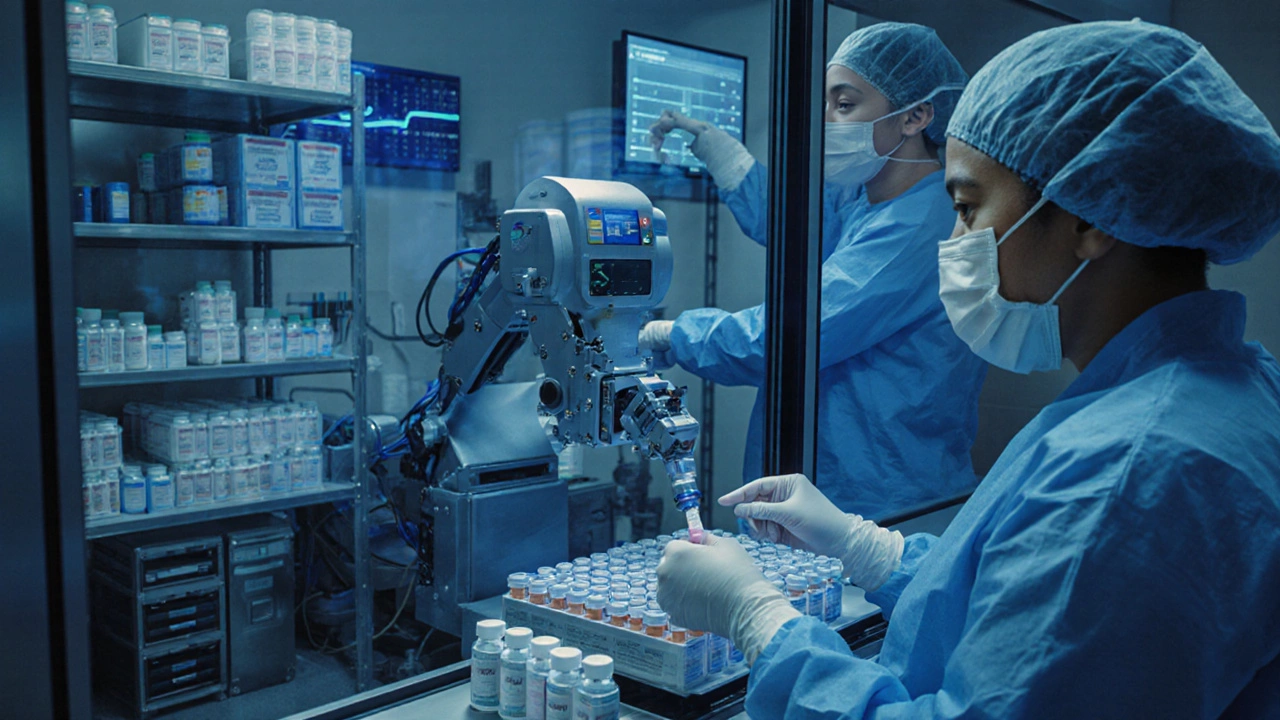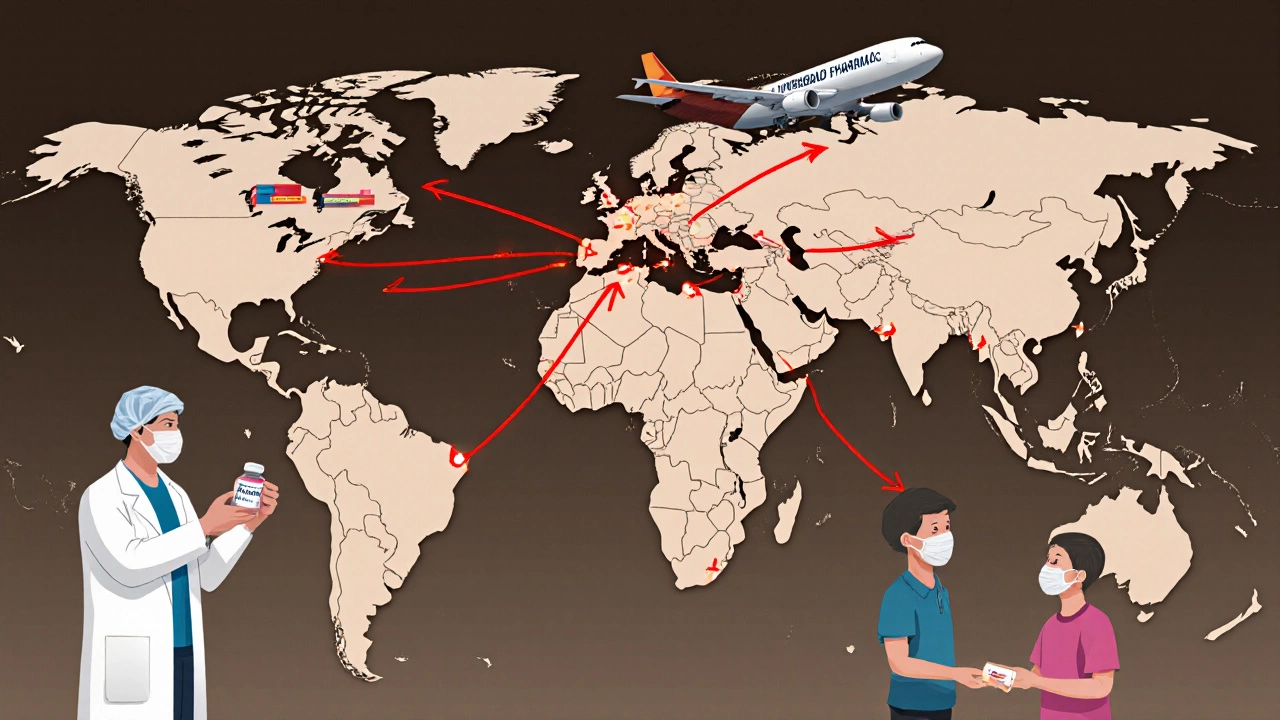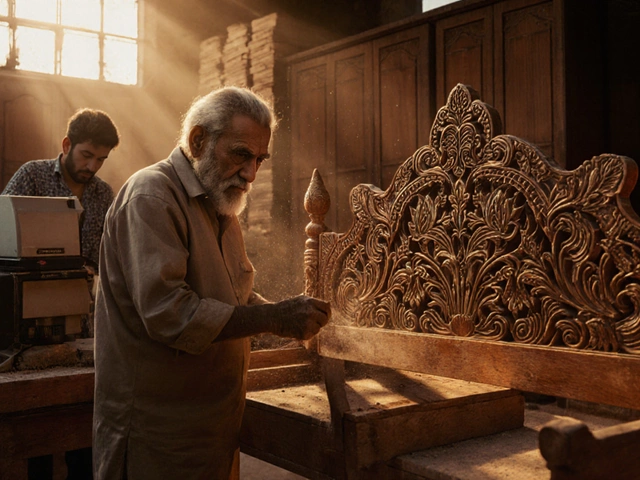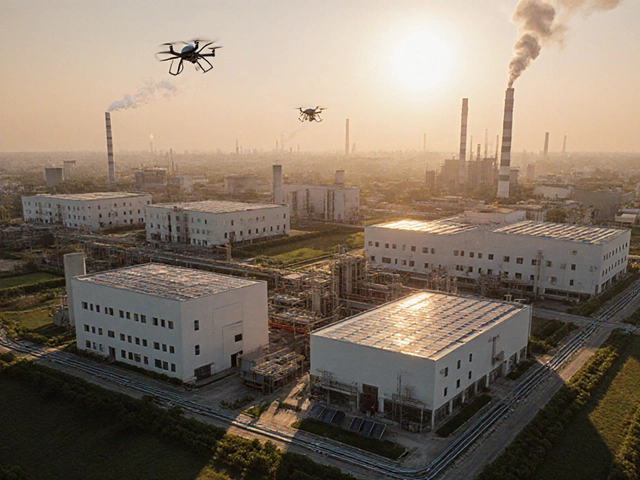Which City Has the Most Pharmaceutical Industry in India?

Pharma Industry Comparison Tool
Compare Pharma Industry Metrics
Hyderabad vs. Mumbai
Hyderabad leads with 25% more in this metric. Hyderabad has over 1,200 pharma companies compared to Mumbai's 500+, making it the clear industry leader.
When you think of medicine made in India, you don’t just think of cheap pills. You think of scale, precision, and global reach. India supplies over 20% of the world’s generic medicines. But where exactly is all of it being made? If you’re trying to understand where India’s pharmaceutical heart beats the strongest, the answer isn’t spread out-it’s concentrated. One city stands far ahead of the rest: Hyderabad.
Hyderabad: The Real Pharma Capital of India
Hyderabad isn’t just a city with a lot of drug factories. It’s the epicenter of India’s pharmaceutical industry. More than 40% of India’s total pharmaceutical output comes from this single city. That’s more than Mumbai, Bengaluru, and Delhi combined. The region, often called "Drug City," hosts over 1,200 pharma companies, including global giants like Dr. Reddy’s, Aurobindo Pharma, and Natco Pharma. These aren’t small labs-they’re massive, FDA- and EMA-certified manufacturing plants that export to the U.S., EU, Australia, and beyond.
What makes Hyderabad different? It’s not luck. The state government invested heavily in infrastructure decades ago. Special Economic Zones (SEZs) like Genome Valley were built with dedicated water supply, waste treatment plants, and power grids designed for pharma production. The city also has one of India’s top medical research hubs-CSIR-CDRI and the Indian Institute of Chemical Technology (IICT)-which feed innovation directly into local manufacturers.
Hyderabad’s pharma sector employs over 200,000 people directly. That’s not just chemists and lab technicians-it’s logistics workers, quality control inspectors, regulatory specialists, and export managers. The city’s airport has dedicated cold-chain cargo lanes for temperature-sensitive drugs. That’s something no other Indian city has at this scale.
How Hyderabad Compares to Other Major Pharma Hubs
Other cities in India have strong pharma presence, but none match Hyderabad’s density or export capacity.
- Mumbai has a long history in pharma, with companies like Cipla and Sun Pharma headquartered here. But most of its manufacturing is spread across Navi Mumbai and Gujarat. Mumbai’s role is more about corporate HQs and R&D than mass production.
- Bengaluru is known for biotech and startups. Companies like Biocon and Syngene are based here, but they focus more on innovation than bulk manufacturing. The city lacks the industrial zoning and chemical waste infrastructure that large-scale API (Active Pharmaceutical Ingredient) plants require.
- Pune has a growing cluster, especially in contract manufacturing. But it’s still small compared to Hyderabad-only about 15% of its output comes from pharma, and most of it is for the domestic market.
- Ahmedabad and Vadodara in Gujarat are strong in API production, especially for antibiotics. But they lack the integrated ecosystem Hyderabad has-no dedicated pharma universities, no FDA inspection teams stationed nearby, no export logistics optimized for pharma.
Here’s a quick comparison of the top five cities:
| City | Pharma Companies | Export Share of India | API Production Capacity | Regulatory Inspections (FDA/EMA) |
|---|---|---|---|---|
| Hyderabad | 1,200+ | 42% | High (35% of national) | High (Over 80 inspections/year) |
| Mumbai | 500+ | 18% | Medium | Medium (30 inspections/year) |
| Bengaluru | 400+ | 12% | Low (mostly biologics) | Low (15 inspections/year) |
| Pune | 300+ | 8% | Medium | Medium (20 inspections/year) |
| Gujarat (Ahmedabad/Vadodara) | 600+ | 15% | High (antibiotics focus) | Medium (25 inspections/year) |
The numbers don’t lie. Hyderabad leads in every category that matters: number of companies, export volume, regulatory compliance, and production scale. It’s the only city where you can walk from an API plant to a formulation unit to a packaging line-all within a 10-kilometer radius.

Why Other Cities Can’t Catch Up
Why hasn’t Bengaluru, with its tech talent, become the pharma hub? Or Pune, with its strong engineering base? The answer is infrastructure and specialization.
Pharmaceutical manufacturing isn’t just about having smart people. It needs:
- Strict environmental controls for chemical waste
- Continuous power supply (no outages-drugs can’t be made with interruptions)
- Water purified to pharmaceutical-grade standards
- Specialized transport for temperature-controlled shipments
- Regulatory teams that understand global compliance
Hyderabad has all of this. Other cities have bits and pieces. Mumbai has corporate offices. Bengaluru has startups. Gujarat has API plants. But only Hyderabad has the full stack: R&D, API, formulation, packaging, testing, export, and compliance-all under one roof, literally.
Even the government recognizes this. The Union Ministry of Chemicals and Fertilizers recently approved a ₹1,200 crore expansion of the Hyderabad Pharma City project. New plants are being built with AI-driven quality control and robotic packaging lines. This isn’t about keeping up-it’s about staying ahead.
Who Uses Hyderabad’s Drugs?
If you take a generic version of a blood pressure pill, an antibiotic, or a cancer drug in the U.S., Europe, or Australia, there’s a very good chance it came from Hyderabad. The FDA inspects more pharma plants in Hyderabad than in any other city outside the U.S. In 2024, over 80 FDA inspections were conducted in Hyderabad alone. Nearly 70% of those passed with zero critical findings.
That’s why big names like Pfizer, Merck, and Novartis outsource their generic drug production to Hyderabad. They don’t just want cheap. They want reliable. And Hyderabad delivers.
India’s entire reputation as the "pharmacy of the world" rests on Hyderabad’s ability to produce high-quality, low-cost medicines at scale. Without it, global access to affordable drugs would collapse.

What’s Next for Hyderabad’s Pharma Industry?
The next wave isn’t just about making more pills. It’s about making smarter ones.
Hyderabad is now leading India’s push into biosimilars-complex, biotech-based drugs that mimic expensive biologics like Humira or Herceptin. Companies like Biocon and Dr. Reddy’s are already exporting biosimilars to the EU and U.S. The city is also investing in mRNA vaccine production, with new facilities planned to support future pandemics.
There’s also a push for green manufacturing. Old pharma plants used to dump waste into rivers. Now, new plants use closed-loop water systems and solar-powered reactors. The goal is to make Hyderabad not just the largest, but the cleanest pharma hub in the world.
By 2030, Hyderabad aims to produce 60% of India’s pharma output and account for 15% of global generic drug supply. That’s not a dream-it’s a roadmap backed by billions in investment and decades of focused policy.
Final Thought: It’s Not Just a City. It’s a System.
Hyderabad’s dominance isn’t accidental. It’s the result of smart planning, long-term investment, and a workforce trained for decades in the nuances of drug manufacturing. Other cities might have better weather or more tech talent. But when it comes to making medicine that saves lives around the world, Hyderabad is unmatched.
If you’re looking for where India’s pharma industry truly lives, you don’t need to check a map. Just follow the supply chains. They all lead back to Hyderabad.
Is Hyderabad the only city in India with large-scale pharma manufacturing?
No, but it’s by far the largest. Other cities like Mumbai, Bengaluru, Pune, and Gujarat’s industrial belt also have pharma plants. However, none match Hyderabad’s concentration of companies, export volume, regulatory approvals, or integrated supply chain. Hyderabad produces over 40% of India’s pharmaceutical output, far more than any other city.
Why do global companies like Pfizer and Merck rely on Hyderabad?
Because Hyderabad offers high-quality, low-cost manufacturing that meets global standards. Over 80 FDA inspections are conducted in Hyderabad each year, and most pass with zero critical violations. The city has the infrastructure, skilled workforce, and regulatory experience to produce complex generics and biosimilars that comply with U.S. and EU rules. No other Indian city has this level of consistent compliance.
What’s the difference between API and formulation in pharma?
API stands for Active Pharmaceutical Ingredient-the actual drug molecule that treats the condition. Formulation is the process of turning that API into a pill, capsule, or injection with additives like binders and coatings. Hyderabad excels at both: it produces bulk APIs and then turns them into finished medicines for export. Most other cities focus on just one side.
Does Hyderabad produce vaccines too?
Yes. Hyderabad is a major hub for vaccine manufacturing in India. Companies like Biological E and Bharat Biotech produce millions of doses of vaccines here, including COVID-19 shots. The city now has dedicated cold-chain facilities and mRNA production lines, positioning it as a global player in vaccine supply.
Is Hyderabad’s pharma industry environmentally sustainable?
It’s improving fast. Older plants had pollution issues, but new facilities are built with zero liquid discharge systems, solar energy, and AI-driven waste monitoring. The government now requires all new pharma units to meet strict green standards. Hyderabad is moving toward becoming the world’s first eco-friendly pharma hub.



